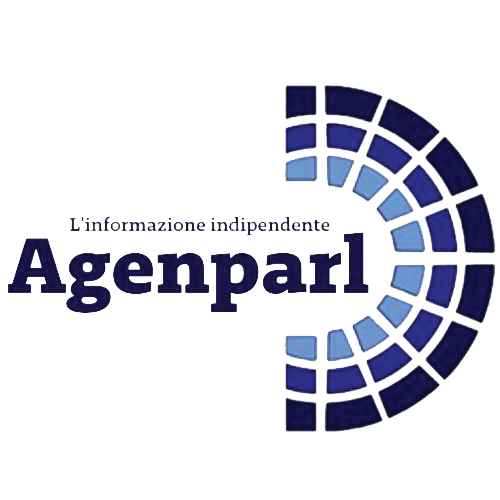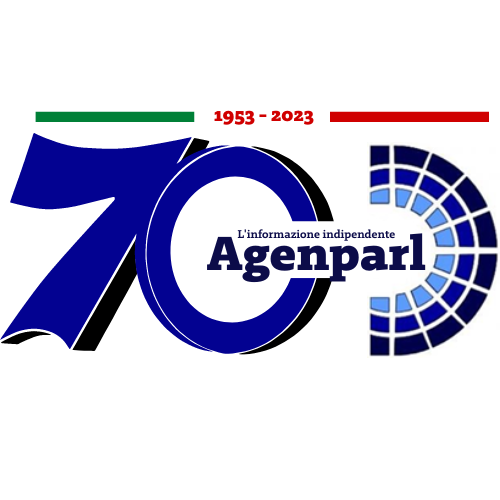 (AGENPARL) - Roma, 6 Dicembre 2022
(AGENPARL) - Roma, 6 Dicembre 2022(AGENPARL) – mar 06 dicembre 2022 https://whitney.us13.list-manage.com/track/click?u=387f59a72ae7b64ccae37d5c9&id=7e16fa855e&e=59415c6e7e
https://whitney.us13.list-manage.com/track/click?u=387f59a72ae7b64ccae37d5c9&id=34d9bcb559&e=59415c6e7e
NEW COMMISSION BY MIMI ?N??HA LAUNCHES ON THE WHITNEY MUSEUM’S DIGITAL ART PLATFORM ARTPORT
Drawing from the Prelinger Archives and the United States Department of Agriculture (USDA), 40% of Food in the US is Wasted (How the Hell is That Progress, Man?) is an interactive video composed of archival video clips from the 1950s–80s that advertise the technological optimism of big agriculture. The sampled audio and video footage reveal the contradiction between the narrative of equitable distribution promoted by agricultural systems and the realities of ever-increasing production and yield. The video clips are presented in a repetitive grid that viewers advance through with continuous clicking. This interactive element of the work amplifies the redundancies built into the process of automation. Accompanying the visuals is music by Jules Faife, which drives the narrative and pulls the viewer into the artwork. ?n??ha also works against the score and archival audio throughout the piece, breaking up the momentum by inserting the question, “How the Hell is That Progress, Man?”
“Mimi ?n??ha questions the USDA’s messaging with its own archival videos, revealing the disconnect between the promotional footage and the truths of increased food production,” says Christiane Paul, Curator of Digital Art at the Whitney. “The title of the work, 40% of Food in the US is Wasted (How the Hell is That Progress, Man?), references the USDA’s own estimates to emphasize the realities of food waste.”
By today’s standards, the archival videos reveal practices that would be considered problematic and bring light to the contradictions of the solutions to food waste historically boasted by the USDA. The footage outwardly displays systemic conditions of production and labor by documenting the demographics of the people working in the fields, at the conveyor belts, and in oversight roles. This work continues ?n??ha’s practice of interrogating, critiquing, and exposing the internal logic of technology-driven progress.
40% of Food in the US is Wasted (How the Hell is That Progress, Man?) is commissioned by the Whitney Museum of American Art. The project is overseen by Christiane Paul, Curator of Digital Art.
More information on 40% of Food in the US is Wasted (How the Hell is That Progress, Man?) is available on [whitney.org](https://whitney.us13.list-manage.com/track/click?u=387f59a72ae7b64ccae37d5c9&id=788184ed15&e=59415c6e7e).
ABOUT THE ARTIST
Mimi ?n??ha (b. 1989) is a Nigerian-American artist creating work about a world made to fit the form of data. By foregrounding absence and removal, her multimedia practice uses print, code, installation and video to make sense of the power dynamics that result in disenfranchised communities’ different relationships to systems that are digital, cultural, historical, and ecological. ?n??ha has been in residence at Studio XX (Canada), Data & Society Research Institute (USA), the Royal College of Art (UK), Eyebeam Center for Arts & Technology (USA), and Arthouse Foundation (Nigeria, upcoming). She has spoken and exhibited internationally at venues like La Gaitê Lyrique (France), FIBER Festival (Netherlands), Mao Jihong Arts Foundation (China), and Le Centre Pompidou (France).
ABOUT ARTPORT
artport is the Whitney Museum’s portal to Internet art and an online gallery space for net art and new media art commissions. Launched in 2001, artport provides access to original commissioned artworks, documentation of net art and new media art exhibitions at the Whitney, and new media art in the Museum’s collection. Recent commissions include Rachel Rossin’s THE MAW OF (2022); Devin Kenney’s Ongoing, Individual Adaptability or How to Quiet Quit (2022); Paolo Cirio’s Criminal Data (2022); The Next Biennial Should Be Curated by a Machine (2021), a collaboration between artists UBERMORGAN, digital humanist Leonarda Impett, and curator Joasia Krysa; Sam Levine and Tega Brain’s New York Apartment (2020); Michael Mandiberg’s Live Study (2019); and Jennifer and Kevin McCoy’s Public Key / Private Key (2019). Access these and more projects at [whitney.org/artport](https://whitney.us13.list-manage.com/track/click?u=387f59a72ae7b64ccae37d5c9&id=8d16fcfba0&e=59415c6e7e).
PRESS CONTACT
For press materials and image requests, please visit our press site at whitney.org/press or contact:
Meghan Ferrucci, Publicist
Whitney Museum of American Art
(212) 671-8346
Whitney Press Office
whitney.org/press
(212) 570-3633
ABOUT THE WHITNEY
The Whitney Museum of American Art, founded in 1930 by the artist and philanthropist Gertrude Vanderbilt Whitney (1875–1942), houses the foremost collection of American art from the twentieth and twenty-first centuries. Mrs. Whitney, an early and ardent supporter of modern American art, nurtured groundbreaking artists when audiences were still largely preoccupied with the Old Masters. From her vision arose the Whitney Museum of American Art, which has been championing the most innovative art of the United States for ninety years. The core of the Whitney’s mission is to collect, preserve, interpret, and exhibit American art of our time and serve a wide variety of audiences in celebration of the complexity and diversity of art and culture in the United States. Through this mission and a steadfast commitment to artists, the Whitney has long been a powerful force in support of modern and contemporary art and continues to help define what is innovative and influential in American art today.
VISITOR INFORMATION
The Whitney Museum of American Art is located at 99 Gansevoort Street between Washington and West Streets, New York City. Public hours are: Monday, Wednesday, and Thursday, 10:30 am–6 pm; Friday, 10:30 am–10 pm; and Saturday and Sunday, 10:30 am–6 pm. Closed Tuesday. Visitors eighteen years and under and Whitney members: FREE. Admission is pay-what-you-wish on Fridays, 7–10 pm. COVID-19 vaccination and face coverings are not required but strongly recommended. We encourage all visitors to wear face coverings that cover the nose and mouth throughout their visit.
Whitney Museum of American Art
99 Gansevoort Street New York, NY 10014
[whitney.org](https://whitney.us13.list-manage.com/track/click?u=387f59a72ae7b64ccae37d5c9&id=b7e15a3366&e=59415c6e7e)
https://whitney.us13.list-manage.com/track/click?u=387f59a72ae7b64ccae37d5c9&id=ae1c841229&e=59415c6e7e https://whitney.us13.list-manage.com/track/click?u=387f59a72ae7b64ccae37d5c9&id=682e4d1183&e=59415c6e7e https://whitney.us13.list-manage.com/track/click?u=387f59a72ae7b64ccae37d5c9&id=933aff9a7f&e=59415c6e7e https://whitney.us13.list-manage.com/track/click?u=387f59a72ae7b64ccae37d5c9&id=079e94c383&e=59415c6e7e
